13 Jasperware Colors That Boost Rarity and Resale Value
Jasperware continues to draw interest for its beauty and craftsmanship. One of the biggest factors that affects its worth is the color of the piece. Certain shades stand out because they were made in smaller numbers or during specific periods. These details can make a real difference for collectors. By learning about these colors, you gain a better sense of what makes them valuable. Explore the list ahead and see which shades capture your attention.
This post may contain affiliate links, which helps keep this content free. Please read our disclosure for more info.
Pale Blue Jasperware
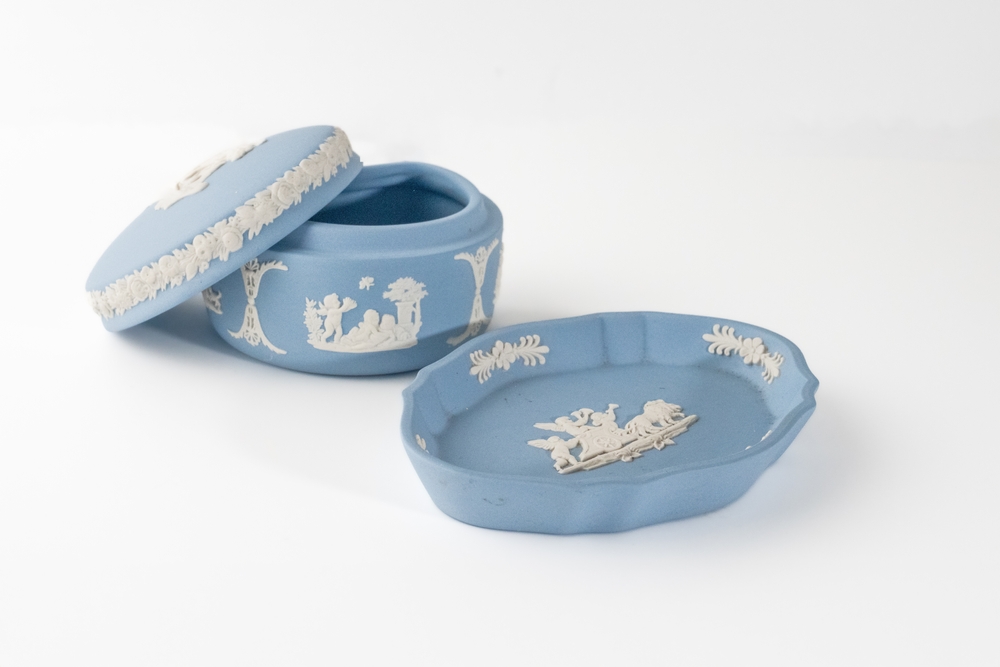
Pale blue is the most recognizable Jasperware shade, first produced in the late 18th century. This soft tone became popular because it matched the neoclassical style of the time. While it was widely made, early pieces in excellent condition still hold strong value. Collectors are often drawn to pieces with crisp white reliefs on pale blue backgrounds.
Market values for pale blue items vary depending on age and size. Common 20th-century examples can sell between $100 and $300. Early Wedgwood pale blue from the late 1700s can reach over $2,000. The condition and clarity of the reliefs greatly affect final prices.
Dark Blue Jasperware
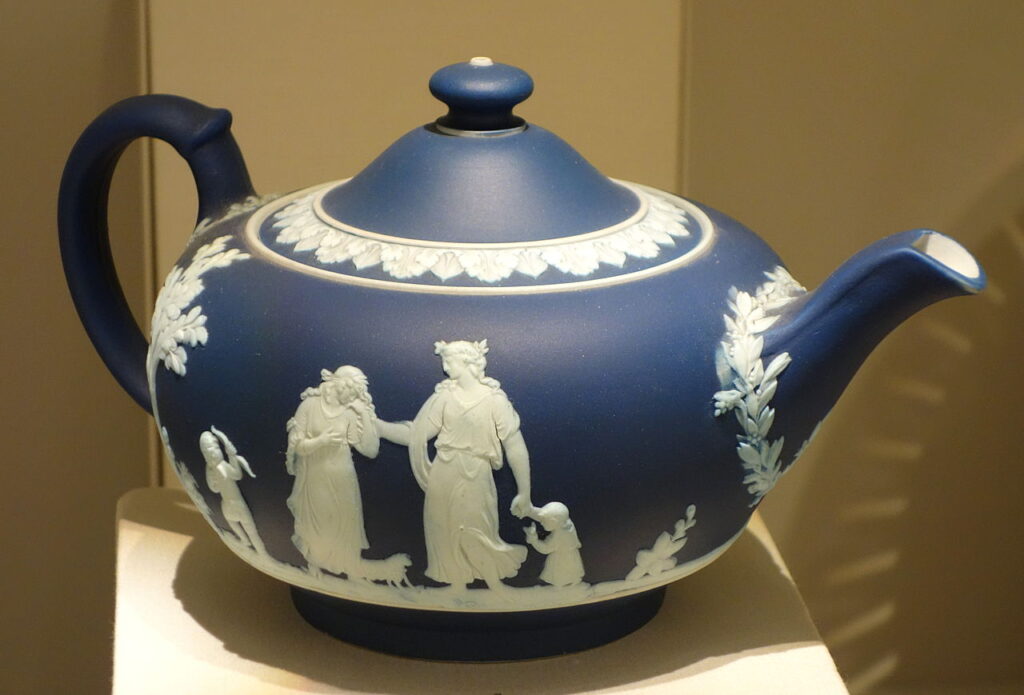
Dark blue is another classic shade with a strong collector following. Introduced in the late 1700s, it was more challenging to produce consistently, making well-preserved examples appealing. The rich contrast between the dark background and white decoration gives these pieces strong display value. Collectors often prize early vases, plaques, and tea sets in this shade.
Resale prices for dark blue Jasperware can range from $200 to $600 for typical items. Rare early plaques or large urns may reach $3,000 or more. The depth of the color and the quality of the relief are key factors for higher pricing. This shade continues to sell well at auctions worldwide.
Lilac Jasperware
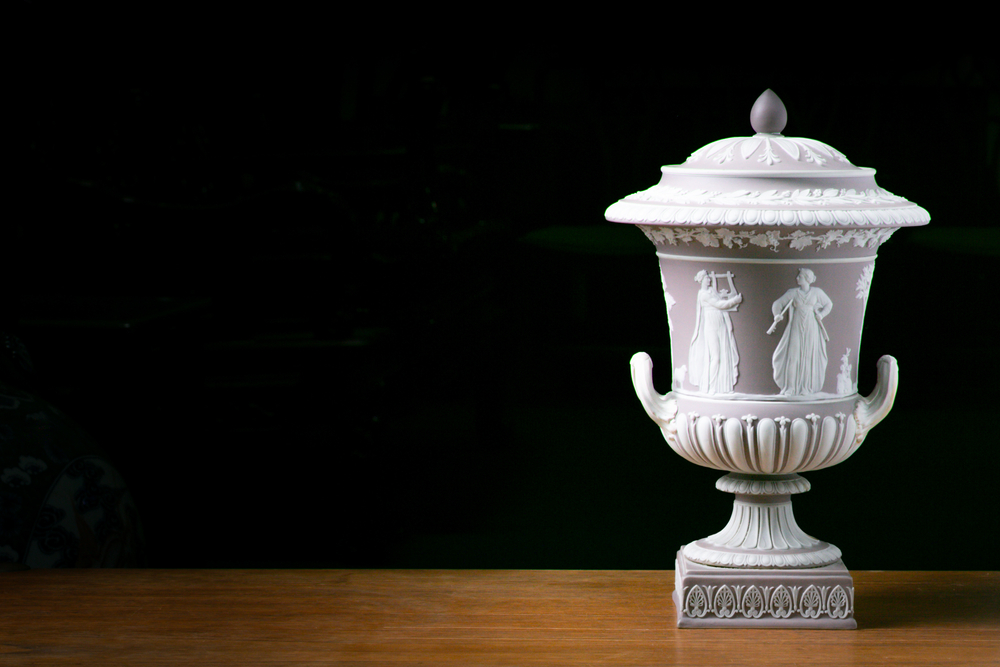
Lilac Jasperware, produced in the early 19th century, is considered less common than blue shades. The soft purple tone was more expensive to make, which limited its output. Collectors admire it because it offers a distinct alternative to the usual blues. Pieces with well-preserved reliefs are particularly attractive.
Typical resale values for lilac Jasperware range from $300 to $800. Rare forms such as cameos or jewelry can bring over $1,500. The subtle color appeals to collectors looking for something outside the standard palette. Its limited production keeps demand high.
Green Jasperware
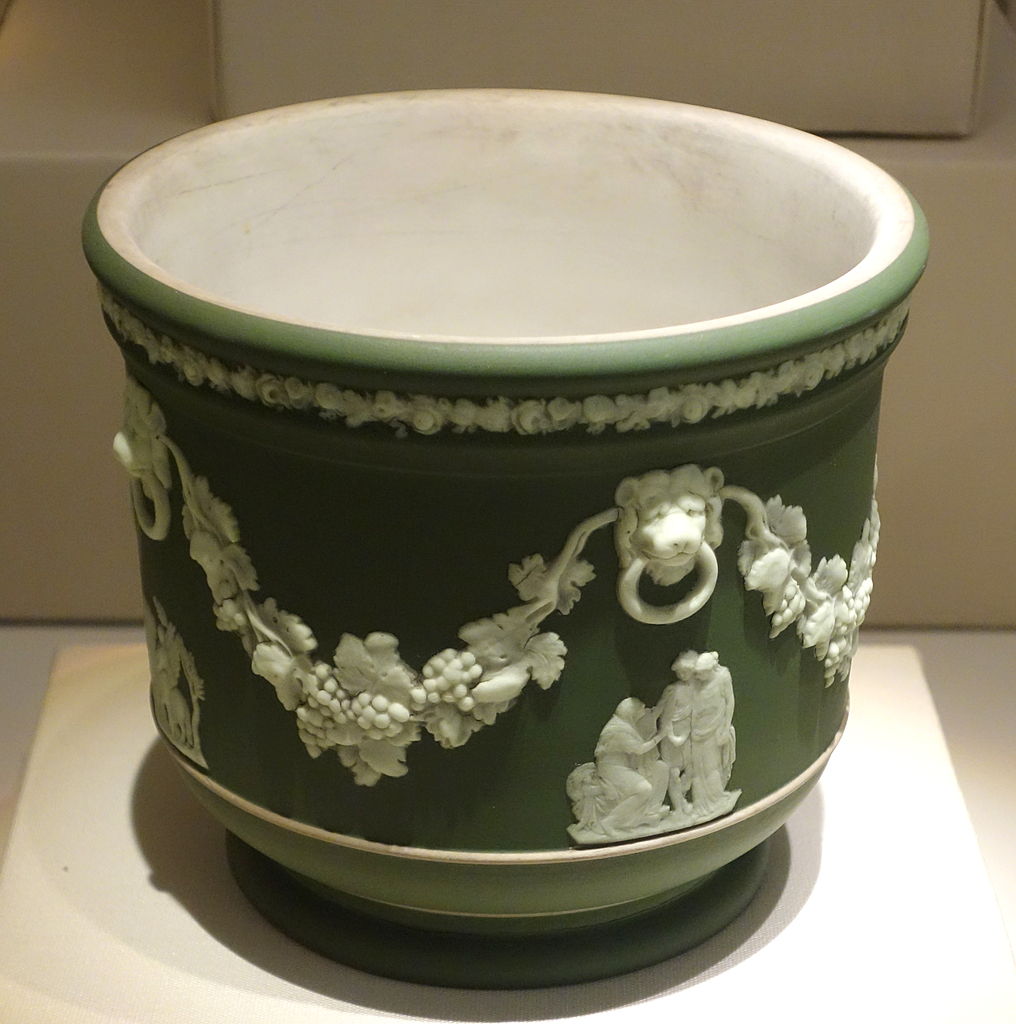
Green Jasperware was produced in both light and dark tones, beginning in the late 18th century. It was popular for tableware and decorative items, but less common than blue shades. Collectors value the natural, earthy appearance combined with the white classical reliefs. This color often appears in medallions, vases, and bowls.
Market values for green Jasperware average between $200 and $500. Large or early examples can sell for more than $1,200. The rarity increases when pieces are found in excellent condition with no cracks or repairs. Collectors often consider it a desirable alternative to blue.
Yellow Jasperware
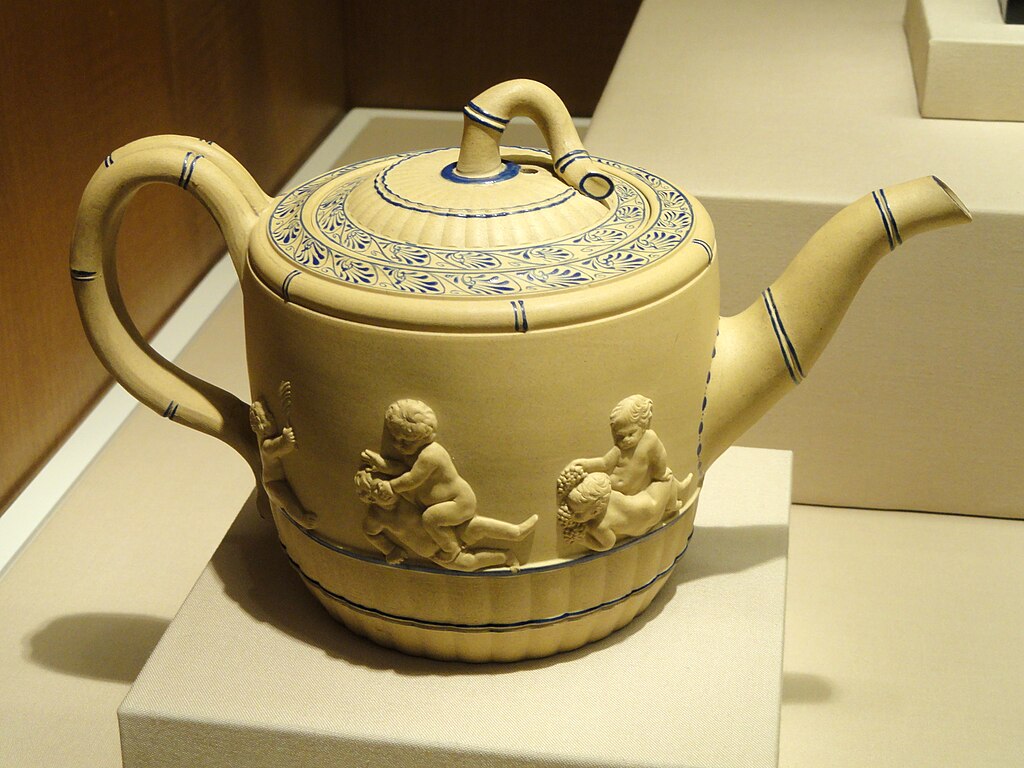
Yellow Jasperware is one of the rarest colors, introduced in the early 19th century. It was produced in small quantities because the pigments were difficult to stabilize. The bright tone made it less suitable for large pieces, so most surviving examples are small medallions or boxes. Collectors view it as highly desirable because of its scarcity.
Typical resale prices start around $1,000 for small items. Larger or early 19th-century pieces can bring $4,000 or more. Its rarity ensures steady interest from collectors worldwide. Yellow remains one of the most valuable colors in the Jasperware palette.
Black Jasperware
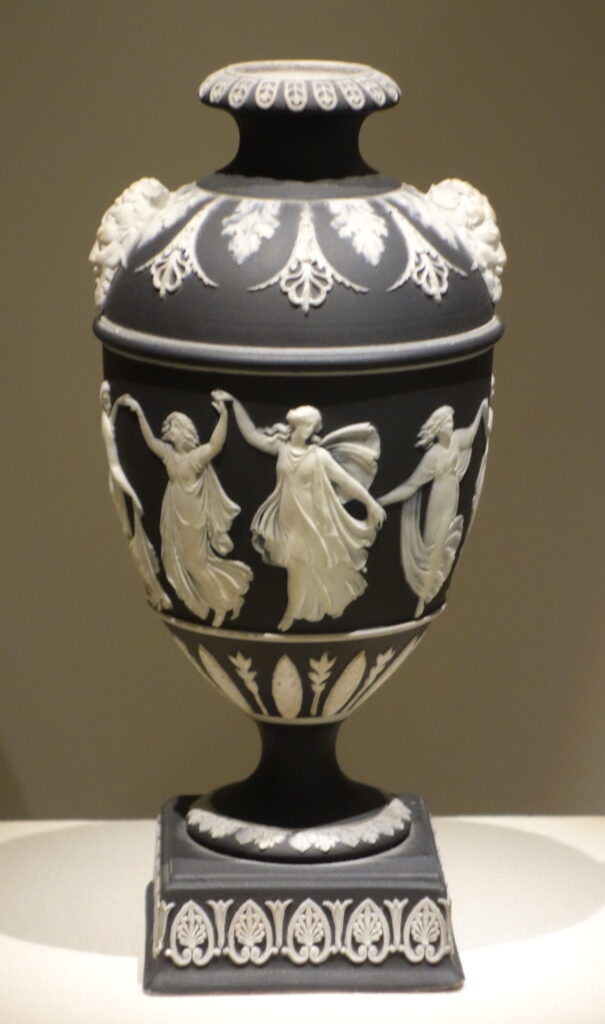
Black Jasperware was introduced around 1778 and stands out for its striking appearance. The deep black tone provides a dramatic contrast against the white decorations. Because it was difficult to achieve consistent results, production numbers were lower than blue or green. Collectors admire its bold aesthetic and rarity.
Resale values for black Jasperware typically range from $400 to $1,000. Unique or early examples can exceed $3,500. Jewelry, cameos, and small decorative plaques in black are especially desirable. Its dramatic look appeals strongly to serious collectors.
Crimson Jasperware
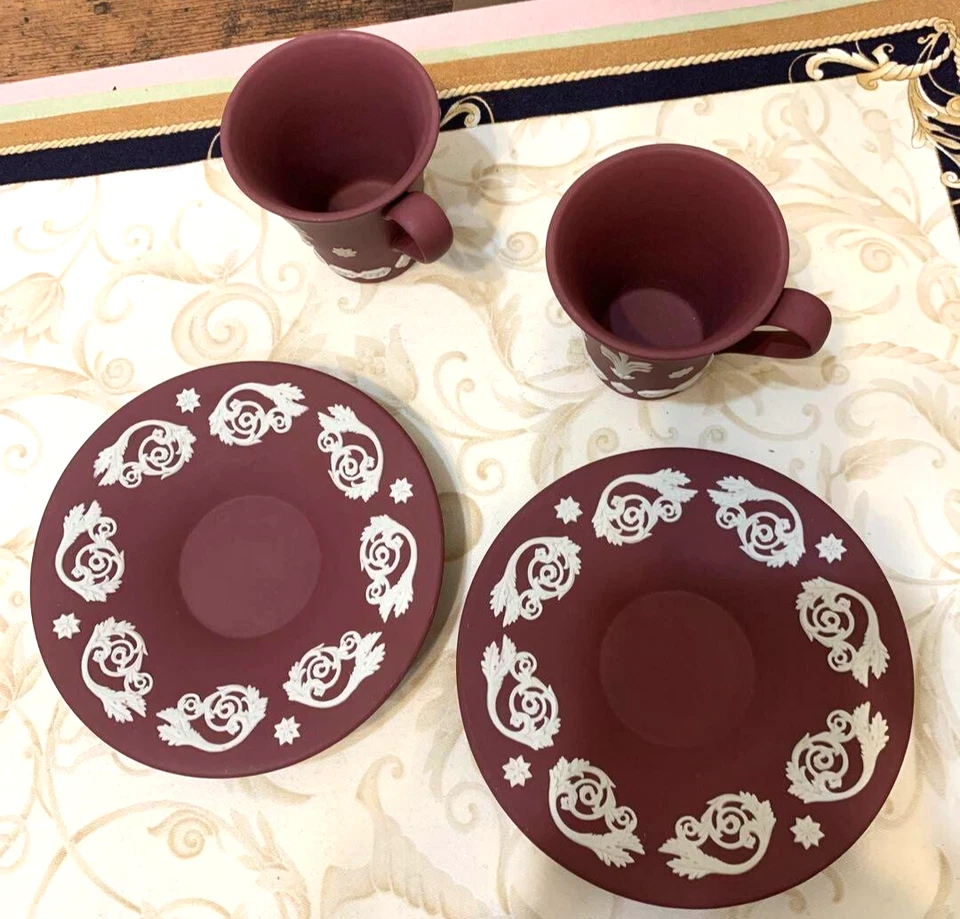
Crimson Jasperware is among the scarcest shades ever produced. It was introduced in the early 19th century but never widely manufactured. The vibrant red tone required expensive pigments, making production limited. Surviving pieces are extremely rare and highly valued.
Most examples are small medallions or decorative plaques. Market prices begin at $2,000 and can exceed $6,000 depending on condition. Collectors consider crimson one of the crown jewels of Jasperware colors. Its rarity keeps demand consistently high.
Sage Green Jasperware
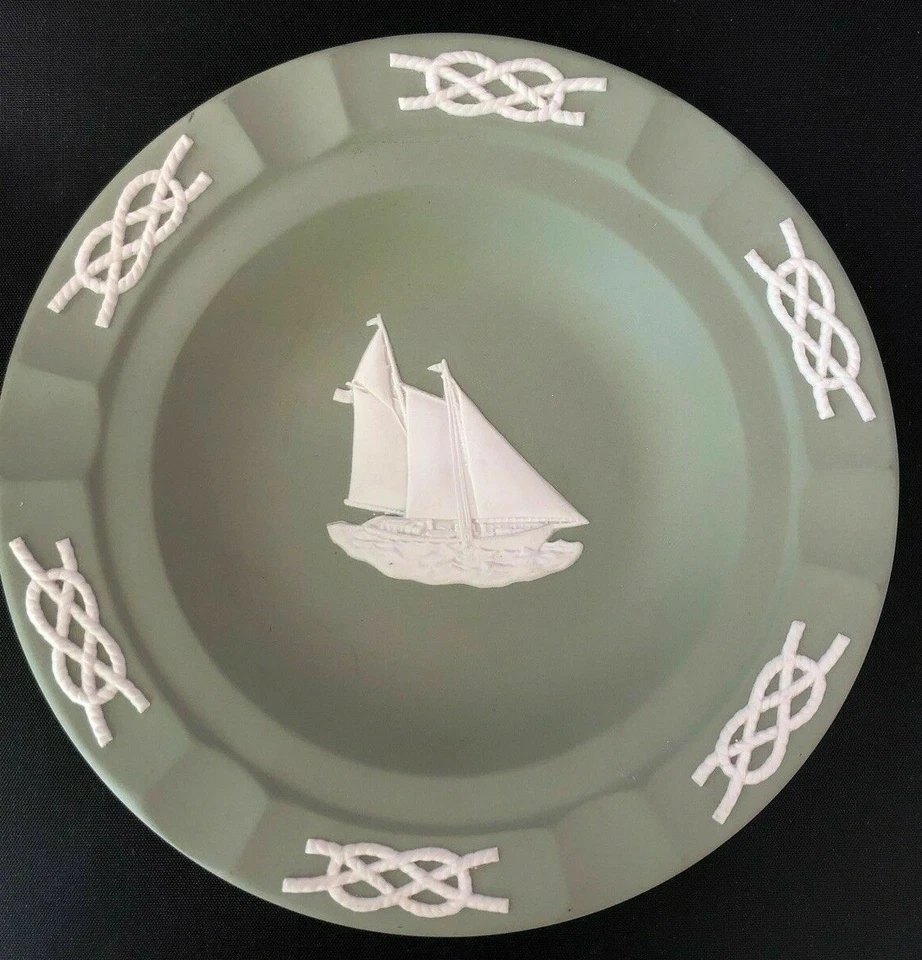
Sage green was popular during the Victorian period and differs from the brighter greens produced earlier. It has a softer, muted tone that pairs well with floral and botanical reliefs. Many pieces from this time were produced in tea sets and decorative plaques. Collectors admire the calming look of this shade.
Typical market values range from $150 to $400 for standard items. Early Victorian pieces in sage green may reach $1,000 or more. This color is less rare than yellow or crimson but still stands out. Its appeal lies in its timeless and natural look.
Pink Jasperware
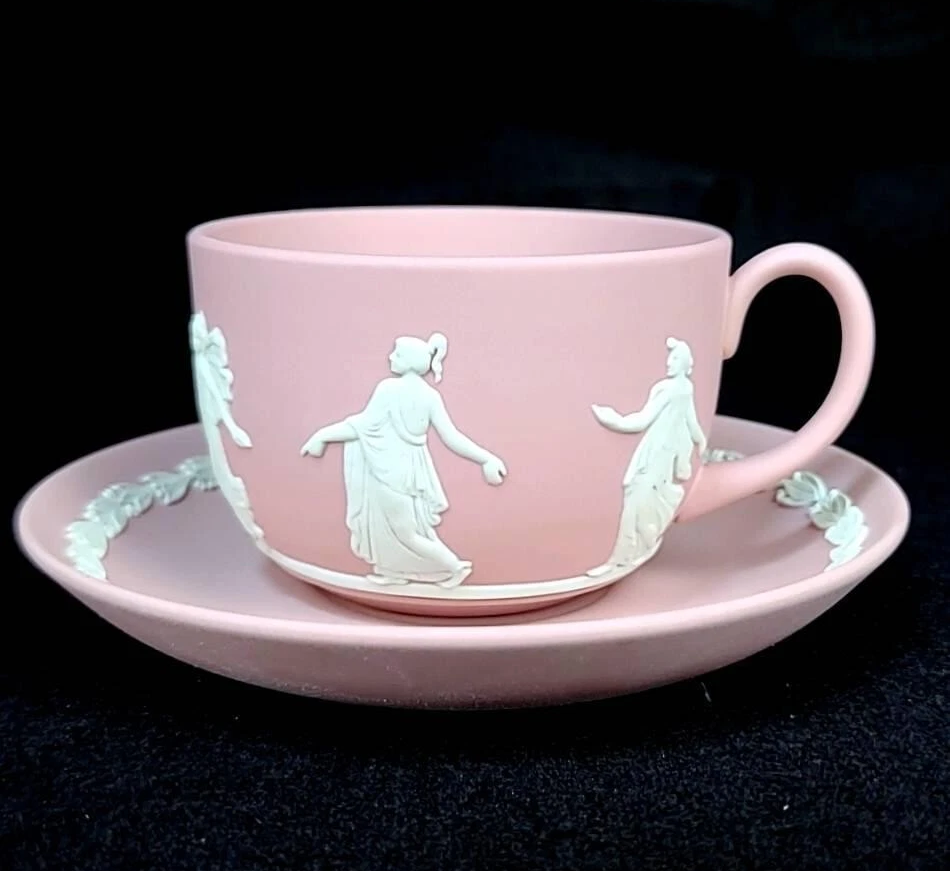
Pink Jasperware was introduced in the late 19th century and was never made in large numbers. The pale rose color gave it a delicate and romantic feel. It was often used for small decorative boxes and medallions. Collectors value it because it differs from the usual blues and greens.
Resale values for pink Jasperware often range from $500 to $1,200. Larger or early examples can exceed $2,000. Its soft tone makes it popular among collectors who prefer unique color palettes. Pieces in excellent condition are becoming harder to find.
Turquoise Jasperware
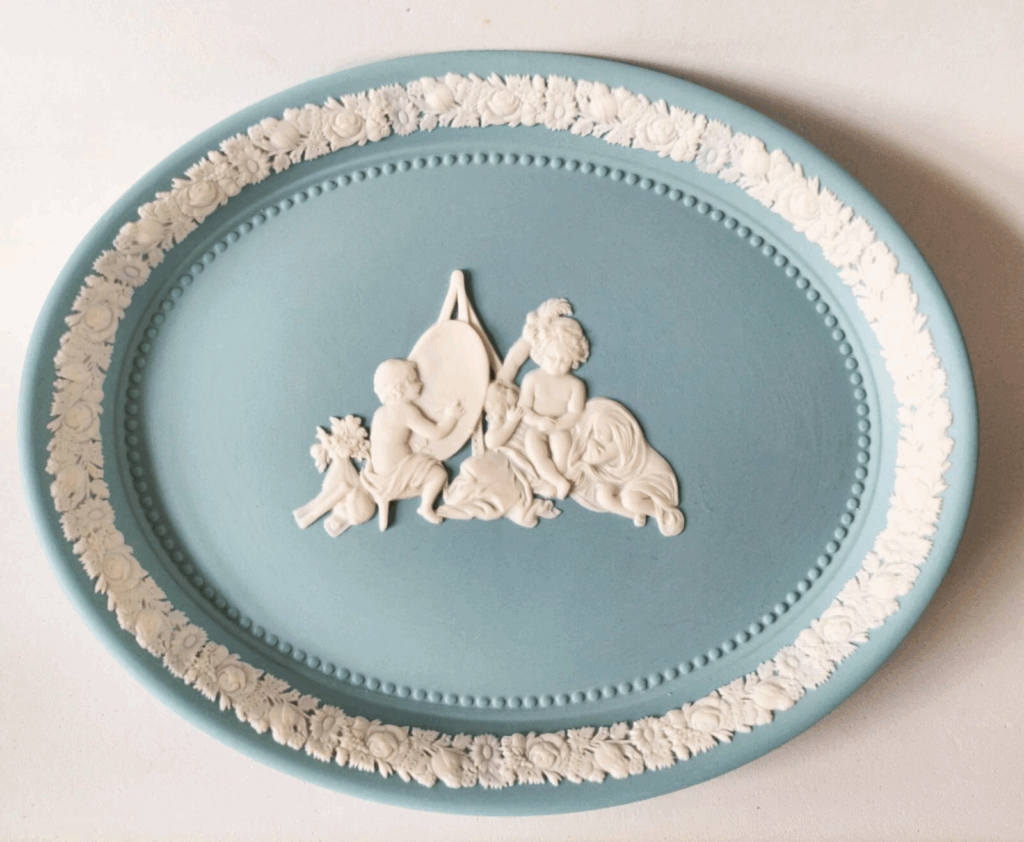
Turquoise Jasperware gained popularity in the late 19th and early 20th century. Its vibrant shade stood out from traditional tones, making it a striking choice. This color was mainly used for decorative items like boxes, plaques, and jewelry. Collectors enjoy the contrast between the turquoise and white reliefs.
Resale values for turquoise Jasperware range between $300 and $800. Rare or unusual shapes can reach $1,500. Though not as scarce as yellow or crimson, it remains desirable. The fresh look makes it popular among both new and experienced collectors.
Olive Green Jasperware
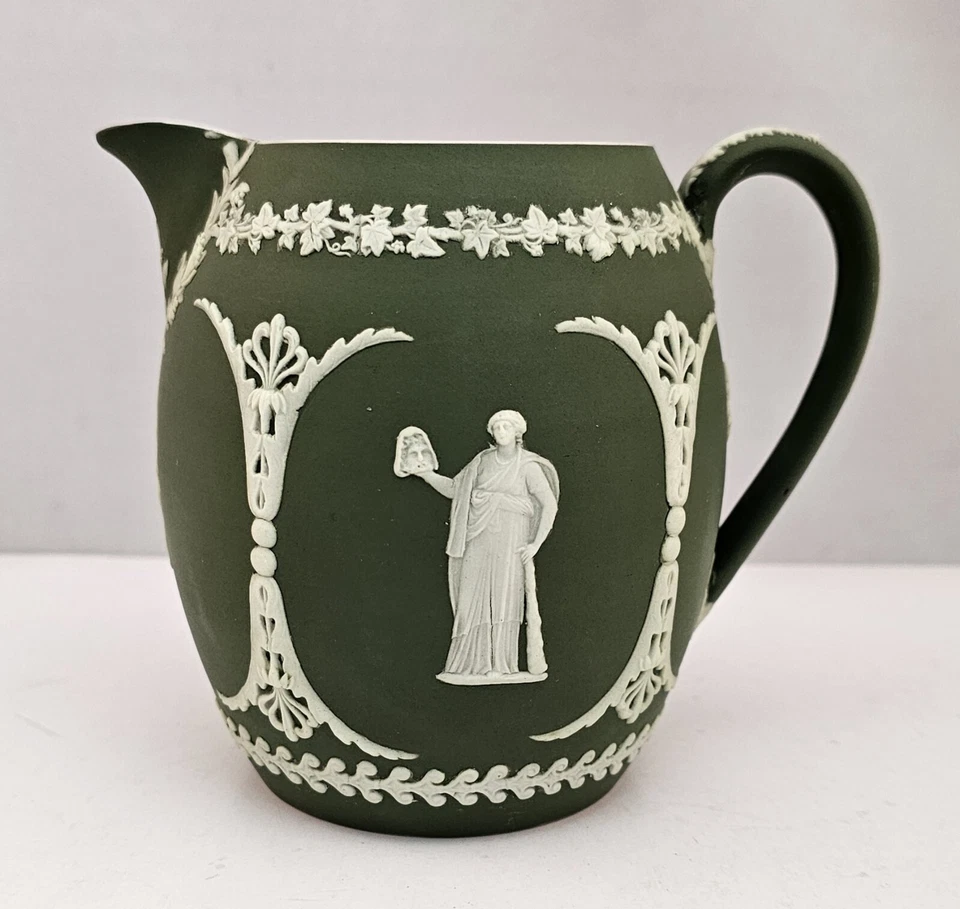
Olive green was a less common variant produced during the 19th century. Its earthy tone made it different from the brighter greens used earlier. It was often applied to vases, pitchers, and decorative plaques. The unique shade made it appealing to collectors of natural tones.
Resale values for olive green Jasperware average between $200 and $600. Larger or rare examples can go for more than $1,500. Collectors appreciate its distinct appearance compared to more common shades. The rarity depends heavily on form and condition.
Teal Jasperware
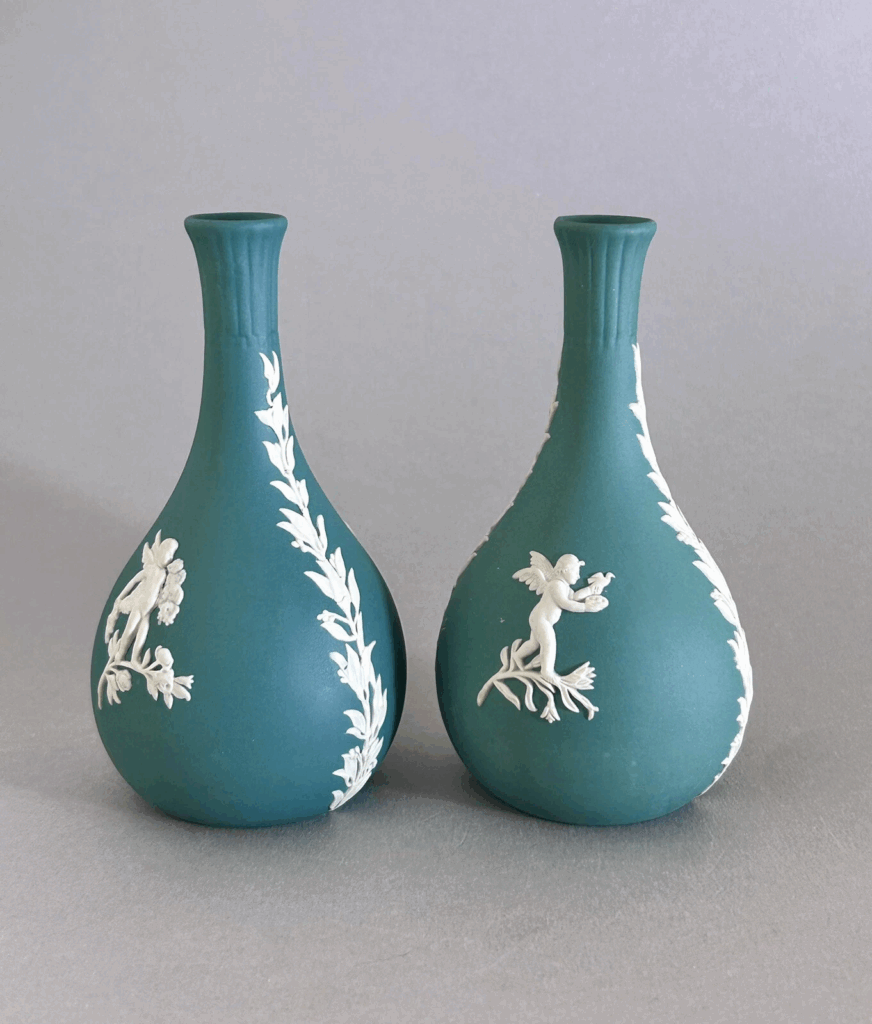
Teal Jasperware appeared in the late 19th century and carried a more modern appeal for its time. The rich blue-green tone was striking and different from other shades. It was often applied to decorative plaques, trays, and jewelry boxes. The color still stands out strongly in collections today.
Market values for teal Jasperware range from $400 to $900. Large pieces or early examples can bring $2,000 or more. Collectors value its distinct tone compared to traditional colors. Its rarity makes it attractive for display collections.
White Jasperware
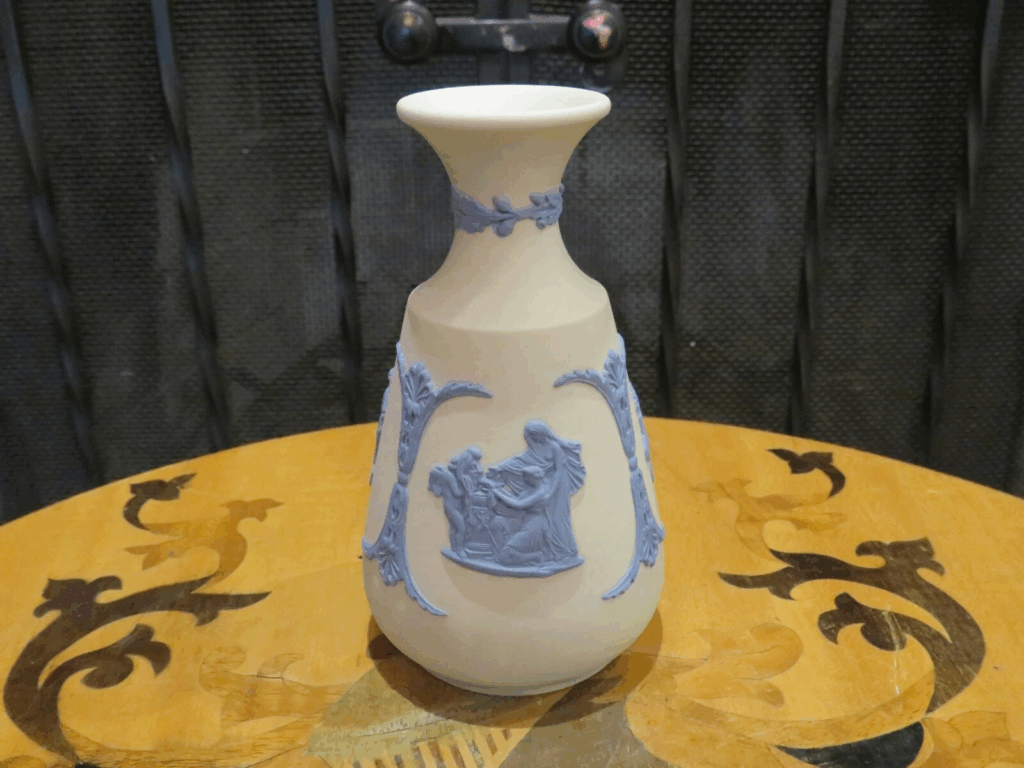
White Jasperware is unique because it shows the relief without background color. It was produced since the late 18th century but in smaller quantities than blue shades. Collectors admire the purity of the design that highlights the detail of the reliefs. Many early medallions and cameos used white Jasperware.
Resale values for white Jasperware typically range from $200 to $600. Rare early cameos or plaques can exceed $2,000. Collectors especially value pieces with sharp detail and no discoloration. White remains a refined and elegant choice.
This article originally appeared on Avocadu.
